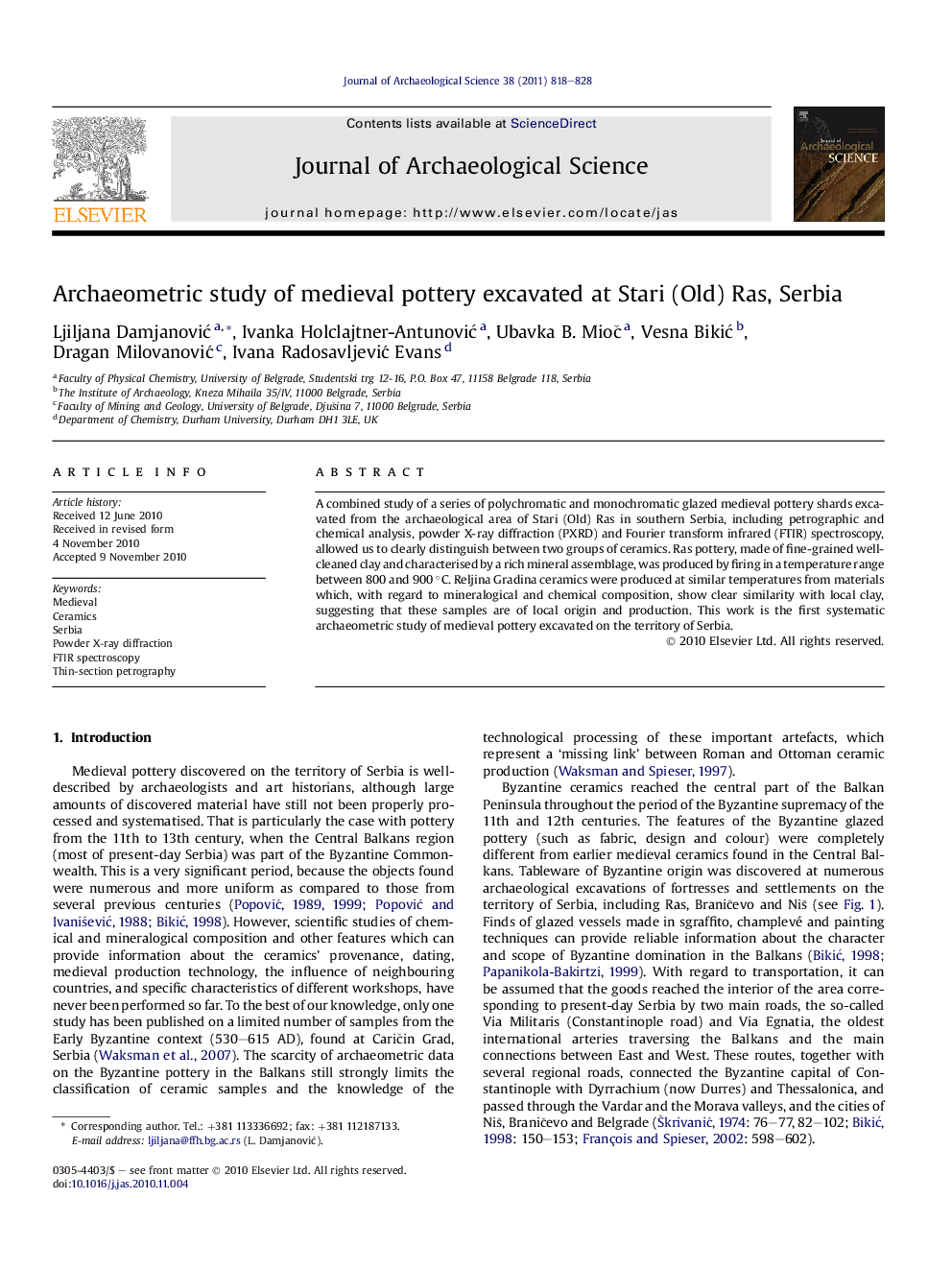| Article ID | Journal | Published Year | Pages | File Type |
|---|---|---|---|---|
| 1035978 | Journal of Archaeological Science | 2011 | 11 Pages |
A combined study of a series of polychromatic and monochromatic glazed medieval pottery shards excavated from the archaeological area of Stari (Old) Ras in southern Serbia, including petrographic and chemical analysis, powder X-ray diffraction (PXRD) and Fourier transform infrared (FTIR) spectroscopy, allowed us to clearly distinguish between two groups of ceramics. Ras pottery, made of fine-grained well-cleaned clay and characterised by a rich mineral assemblage, was produced by firing in a temperature range between 800 and 900 °C. Reljina Gradina ceramics were produced at similar temperatures from materials which, with regard to mineralogical and chemical composition, show clear similarity with local clay, suggesting that these samples are of local origin and production. This work is the first systematic archaeometric study of medieval pottery excavated on the territory of Serbia.
Research highlights►A multianalytical study of medieval pottery excavated in the archaeological area Stari Ras, Serbia. ►Thin-section petrography, ICP-MS, PXRD and FTIR spectroscopy have been used. ►Two groups of samples have been clearly distinguished by applied methods: Ras and Reljina Gradina. ►Reljina Gradina is of local origin and production; Ras is likely to be imported. ►Firing temperature for both groups of samples can be estimated as 800–900 °C
